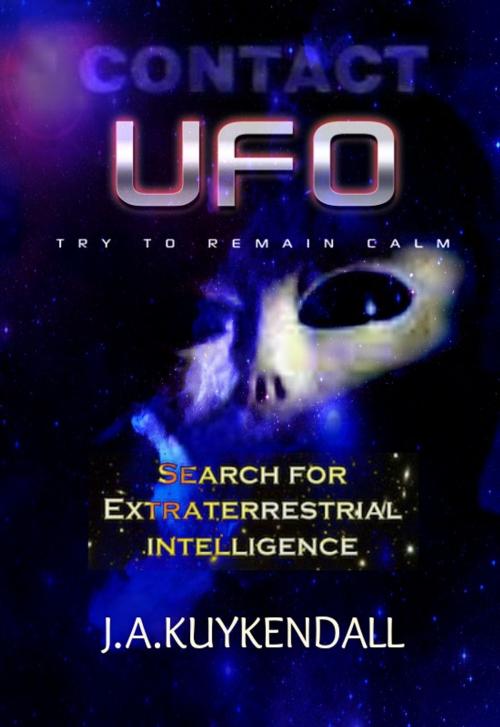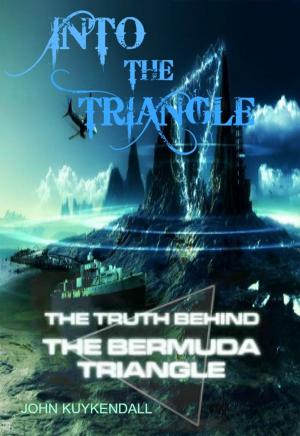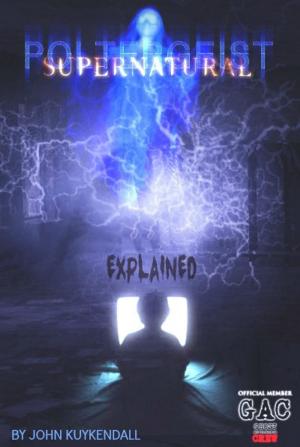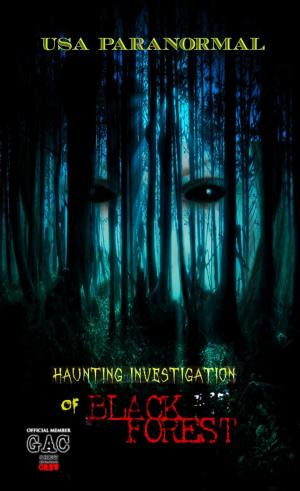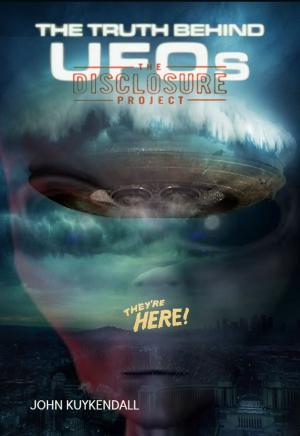Contac UFO
Search For Extraterrestrail Intelligence
Science Fiction & Fantasy, High Tech, Fiction & Literature, Horror| Author: | John Kuykendall | ISBN: | 1230000156454 |
| Publisher: | John Kuykendall | Publication: | July 31, 2013 |
| Imprint: | Language: | English |
| Author: | John Kuykendall |
| ISBN: | 1230000156454 |
| Publisher: | John Kuykendall |
| Publication: | July 31, 2013 |
| Imprint: | |
| Language: | English |
In the long history of the extraterrestrial life debate, April 8, 1960 stands out for its sheer audacity. On that date, for the first time in history, the young astronomer Frank Drake, just shy of his 30th birthday, utilized the new technology of radio telescopes to listen for intelligent signals beyond Earth. Turning the 85-foot Tatel radio telescope of the National Radio Astronomy Observatory in green Bank, West Virginia skyward for this purpose was a brash act of youth, hope and courage. Although in the 1950s astronomers had begun to believe other stars might harbor planets, the subject of extraterrestrials was not yet reputable and was bound to cause controversy. Drake’s observations, backed by NRAO Director Otto Struve, did indeed cause a stir, with ripples that continue fifty years later.
Drake was the first to attempt this experiment, but not the first to think of it. On January 20, 1919, the New York Times ran a front-page headline “Radio to Stars, Marconi’s hope,” in which the radio pioneer Guglielmo Marconi expressed the belief that the eternal properties of radio waves “makes me hope for a very big thing in the future … communication with intelligences on other stars … It may some day be possible, and as many of the planets are much older than ours the beings who live there ought to have information for us of enormous value.” Suggesting that mathematics might be used as a language of communication, Marconi even claimed he had received unexplained signals that might have originated from the stars. This claim prompted the Times, in a lengthy editorial, to advise that humanity should “Let the Stars Alone,” lest we receive knowledge “for which we are unprepared precipitated on us by superior intelligences.”
That paragraph contains in a nutshell many of the persistent themes of what would become known as the Search for Extraterrestrial Intelligence (SETI). In a famous paper in Nature in 1959, physicists Giuseppe Cocconi and Philip Morrison argued that radio waves were indeed the ideal wavelength to search for intelligent interstellar communications. That has ever since
been the main overture of the SETI symphony, though optical SETI and other methods have also been tried. For one brief shining moment even NASA had an observational SETI program, before the forces of ridicule prevailed. The idea that other civilizations would be immensely older than us, perhaps by millions or even billions of years, has also held up to our increasing knowledge of the universe, though SETI practitioners have in general failed to take into account the implications of this fact for the nature of intelligence.
Marconi’s claim that extraterrestrials might have information of great value, measured against the fears of the New York Times that we should leave the stars alone, also foreshadows the hopes of most SETI enthusiasts and the fears of other scientists, including Nobelists Martin Ryle and George Wald and (most recently) Stephen Hawking. The perceived dangers and benefits of SETI give urgency to the debate, actively engaged today by members of the SETI Permanent Study group of the International Academy of Astronautics, among other stakeholders, as to whether SETI activities should be limited to searching for extraterrestrial signals, or whether we should pro-actively “message” extraterrestrial intelligence (METI).
The fact that no signals have yet been unambiguously detected by Marconi or anyone else gives force to the so-called “Fermi Paradox”: given the billions-of-years time scales involved, any extraterrestrials engaged in interstellar travel should have arrived on Earth long ago. Some claim that they have arrived in the form of uFOs, but the extraterrestrial hypothesis for uFOs is an extraordinary claim and, as Carl Sagan cautioned us, extraordinary claims require extraordinary evidence. Alas, such evidence is lacking.
In an attempt to estimate the number of technological civilizations in the galaxy, the u. S. National Academy of Sciences sponsored a small invitation-only meeting at green Bank from October 30 to November 3,
1961.
In the long history of the extraterrestrial life debate, April 8, 1960 stands out for its sheer audacity. On that date, for the first time in history, the young astronomer Frank Drake, just shy of his 30th birthday, utilized the new technology of radio telescopes to listen for intelligent signals beyond Earth. Turning the 85-foot Tatel radio telescope of the National Radio Astronomy Observatory in green Bank, West Virginia skyward for this purpose was a brash act of youth, hope and courage. Although in the 1950s astronomers had begun to believe other stars might harbor planets, the subject of extraterrestrials was not yet reputable and was bound to cause controversy. Drake’s observations, backed by NRAO Director Otto Struve, did indeed cause a stir, with ripples that continue fifty years later.
Drake was the first to attempt this experiment, but not the first to think of it. On January 20, 1919, the New York Times ran a front-page headline “Radio to Stars, Marconi’s hope,” in which the radio pioneer Guglielmo Marconi expressed the belief that the eternal properties of radio waves “makes me hope for a very big thing in the future … communication with intelligences on other stars … It may some day be possible, and as many of the planets are much older than ours the beings who live there ought to have information for us of enormous value.” Suggesting that mathematics might be used as a language of communication, Marconi even claimed he had received unexplained signals that might have originated from the stars. This claim prompted the Times, in a lengthy editorial, to advise that humanity should “Let the Stars Alone,” lest we receive knowledge “for which we are unprepared precipitated on us by superior intelligences.”
That paragraph contains in a nutshell many of the persistent themes of what would become known as the Search for Extraterrestrial Intelligence (SETI). In a famous paper in Nature in 1959, physicists Giuseppe Cocconi and Philip Morrison argued that radio waves were indeed the ideal wavelength to search for intelligent interstellar communications. That has ever since
been the main overture of the SETI symphony, though optical SETI and other methods have also been tried. For one brief shining moment even NASA had an observational SETI program, before the forces of ridicule prevailed. The idea that other civilizations would be immensely older than us, perhaps by millions or even billions of years, has also held up to our increasing knowledge of the universe, though SETI practitioners have in general failed to take into account the implications of this fact for the nature of intelligence.
Marconi’s claim that extraterrestrials might have information of great value, measured against the fears of the New York Times that we should leave the stars alone, also foreshadows the hopes of most SETI enthusiasts and the fears of other scientists, including Nobelists Martin Ryle and George Wald and (most recently) Stephen Hawking. The perceived dangers and benefits of SETI give urgency to the debate, actively engaged today by members of the SETI Permanent Study group of the International Academy of Astronautics, among other stakeholders, as to whether SETI activities should be limited to searching for extraterrestrial signals, or whether we should pro-actively “message” extraterrestrial intelligence (METI).
The fact that no signals have yet been unambiguously detected by Marconi or anyone else gives force to the so-called “Fermi Paradox”: given the billions-of-years time scales involved, any extraterrestrials engaged in interstellar travel should have arrived on Earth long ago. Some claim that they have arrived in the form of uFOs, but the extraterrestrial hypothesis for uFOs is an extraordinary claim and, as Carl Sagan cautioned us, extraordinary claims require extraordinary evidence. Alas, such evidence is lacking.
In an attempt to estimate the number of technological civilizations in the galaxy, the u. S. National Academy of Sciences sponsored a small invitation-only meeting at green Bank from October 30 to November 3,
1961.
